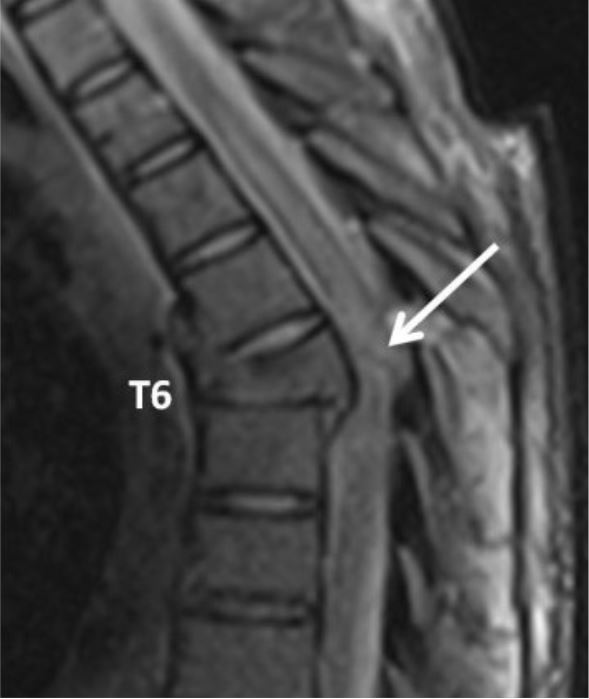Nursing Knowledge
The degree of impairment depends on the level of the injury. Generally, the higher the injury in the spinal column, the greater the loss of function.
Clients with a suspected SCI should be thoroughly examined using a validated assessment tool, such as the International Standards for Neurological Classification of Spinal Cord Injury from the American Spinal Injury Association (ASIA) examination.
| A | Complete | No sensory or motor function is preserved inthe sacral segments. |
| B | Incomplete | Sensory function, but not motor function, is preserved below neurological level and extends through sacral segments S4–S5. |
| C | Incomplete | Motor function is preserved below the neurologic level, and most key muscles below the neurologic level have a muscle grade of less than 3. |
| D | Incomplete | Motor function is preserved below the neurologic level, and most key muscles below the neurologic level have a muscle grade that is greater than or equal to 3. |
| E | Incomplete | Sensory and motor functions are normal. |
A complete spinal cord injury is suspected when there is loss of all sensory and motor function below the level of injury, characterized by:
Findings should be confirmed by imaging studies.

MRI of spinal cord injury:
Spinal cord transection at the T6 injury level (arrow) noted in a patient who had a fall from 300 feet.
Spinal shock is a temporary condition following a spinal cord injury, characterized by loss of reflexes, sensation, and motor activity below the level of the injury. It can resolve within hours to weeks.
Neurogenic shock can be life-threatening. It is a type of distributive shock that can occur with a spinal cord injury above T6, and is characterized by bradycardia and hypotension due to disrupted autonomic pathways.
Autonomic dysreflexia is potentially life-threatening. It can occur in clients with SCIs above T6 and is characterized by severe hypertension, headache, and other symptoms, often triggered by a distended bladder or bowel.
Management may involve:
RELATED TOPIC:
Free Download
Master the topic with a unique study combination of a concise summary paired with video lectures.
USMLE™ is a joint program of the Federation of State Medical Boards (FSMB®) and National Board of Medical Examiners (NBME®). MCAT is a registered trademark of the Association of American Medical Colleges (AAMC). NCLEX®, NCLEX-RN®, and NCLEX-PN® are registered trademarks of the National Council of State Boards of Nursing, Inc (NCSBN®). None of the trademark holders are endorsed by nor affiliated with Lecturio.
Your free account gives you access to:
or
Have a holly, jolly study session 🎁 Save 50% on all plans now >>